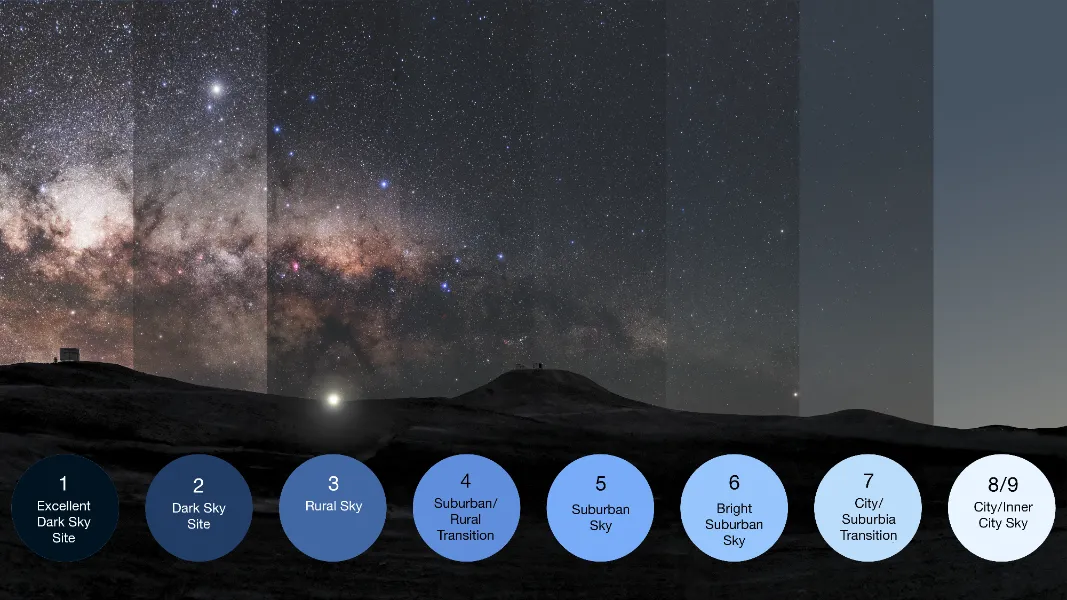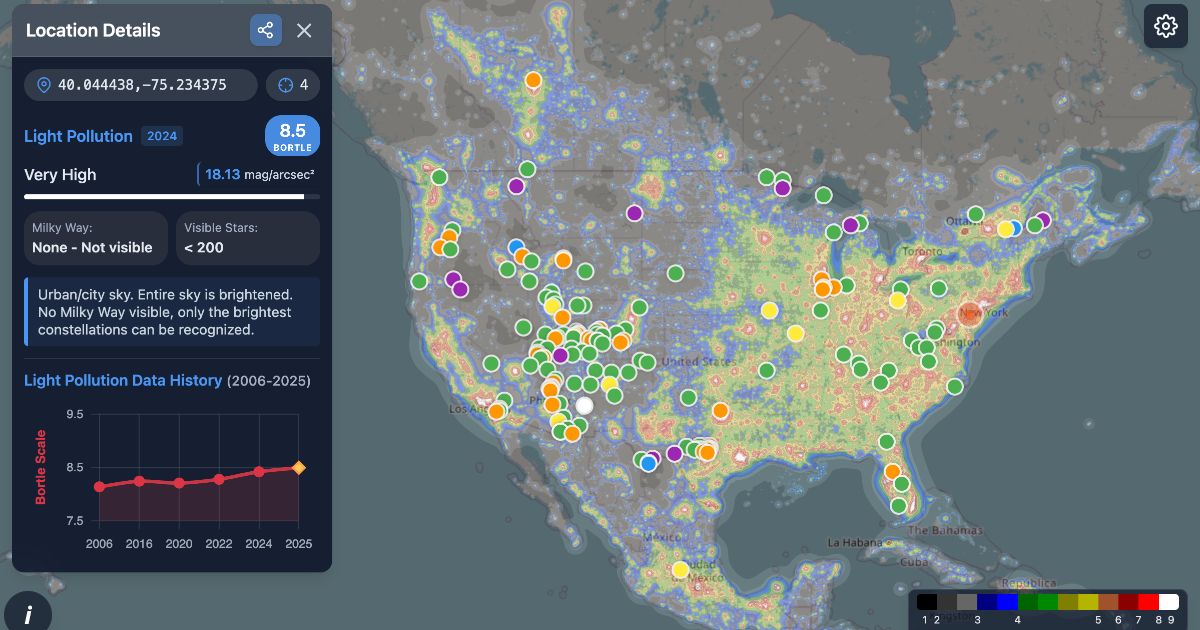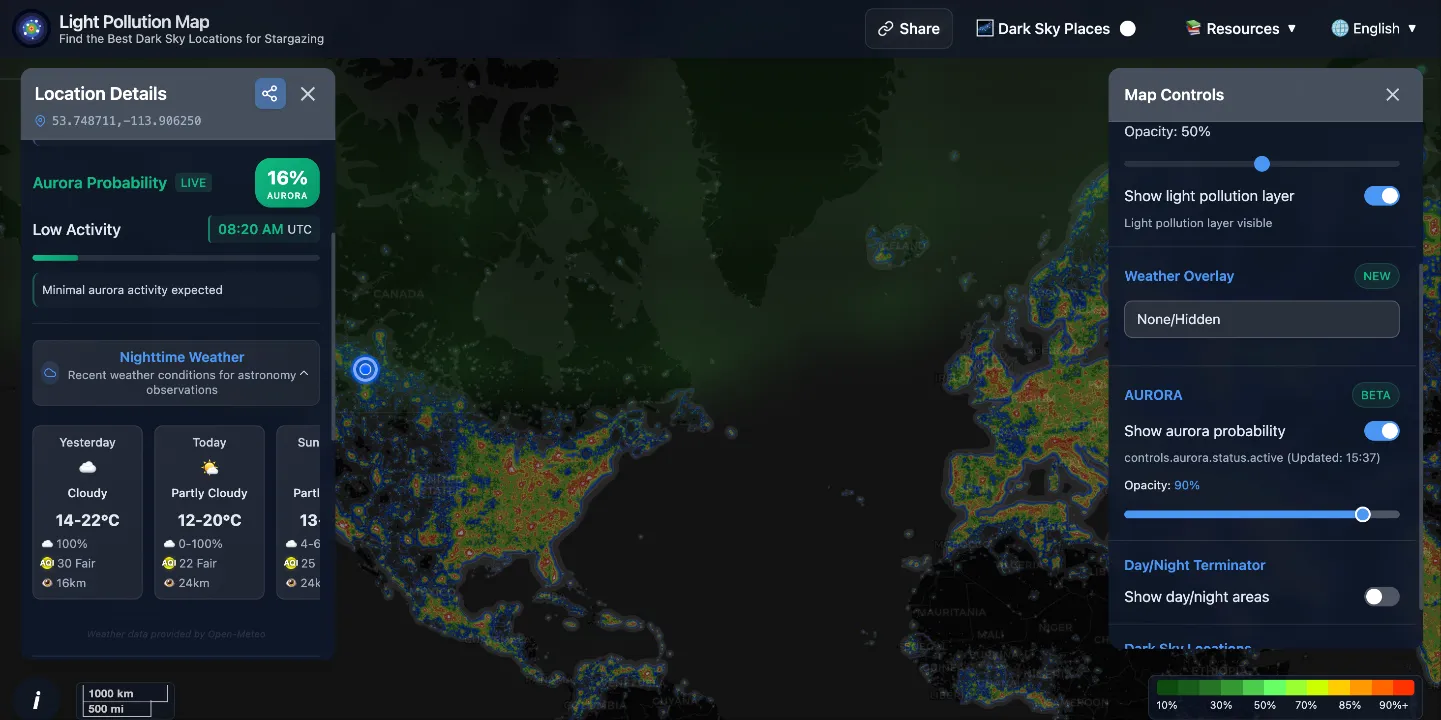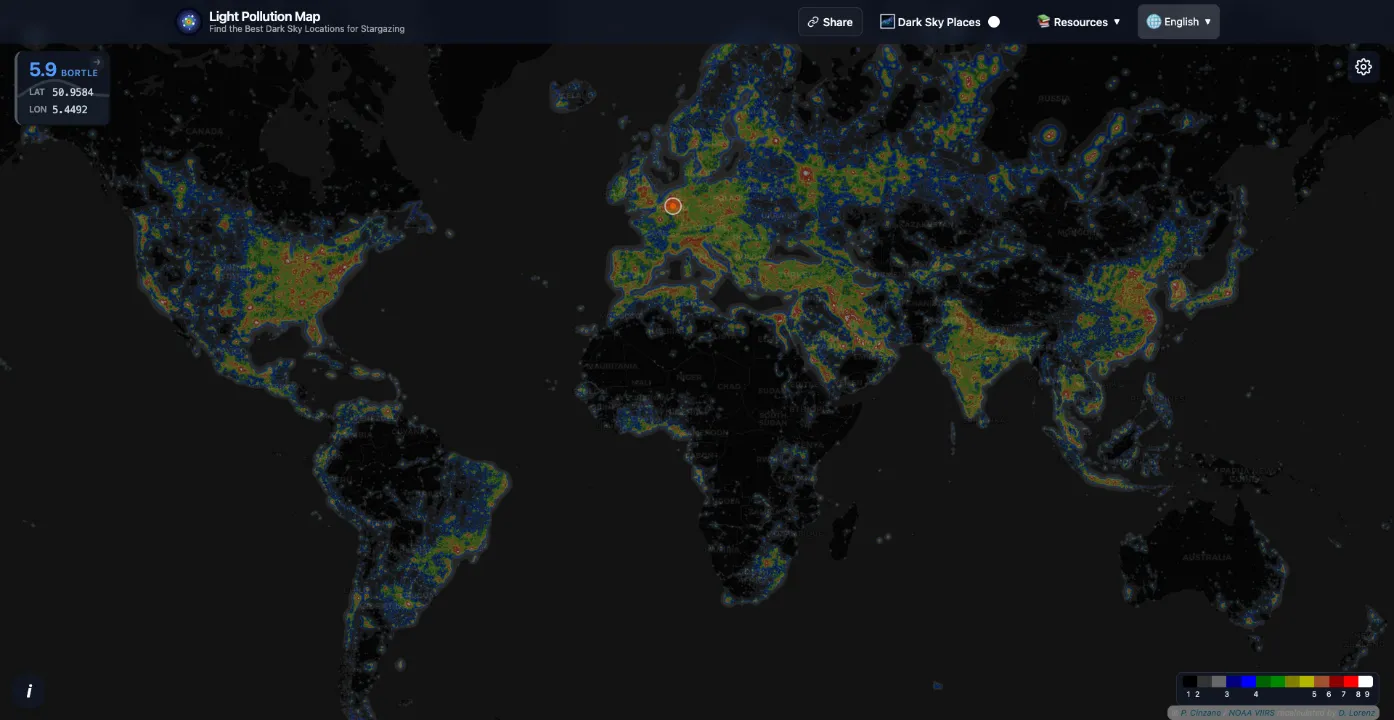Lunar Phase
Moon Times
Next Phases
Observer Location
📷 Exposure Calculator
Calculate equivalent exposure times for astrophotography based on light pollution conditions.
Equivalent Exposure Time
Reference
Exposure Multiplier
Dark Sky Locations
Map Controls
Base Map
Light Pollution Layer
Weather Overlay
NEWAurora Probability
BETADay/Night Terminator
Dark Sky Locations
Search Location
Searching...
Light Pollution2024
Aurora ProbabilityLIVE
Light Pollution Trends (2006-2024)
Analyzing trends...
2024 Prediction
Natural night sky
Rural sky
Suburban sky
Urban sky
City core
Minimal aurora activity expected
Possible aurora visibility under dark skies
Strong aurora activity expected
Excellent aurora viewing conditions
Light Pollution Map FAQ
What does "Bortle Scale" on the map mean? How should I interpret it?

What is "SQM" and how does it differ from the Bortle Scale?
How can I find the best stargazing locations near me?

Our system analyzes your approximate location based on your IP address and automatically displays the Bortle class for that area. You can also search for specific addresses or manually explore the map to discover optimal stargazing spots in other regions.
Can the map show aurora activity? Are there recommended regions for aurora viewing?

We're in the process of integrating real-time aurora prediction tools (such as KP index) and observation layers into our map. This will help users in high-latitude regions like Northern Europe, Canada, and Alaska track and pursue aurora sightings.
Can I use this to plan Milky Way photography sessions?
Absolutely! The map combines light pollution levels with geographical data to help you locate ideal spots for Milky Way observation and photography. We're also planning to add features like Milky Way rise times and direction to support astrophotographers in efficiently planning their shoots.
Is this map optimized for mobile use? Is there an app version?
Which countries or regions are supported? Is it a global map?

What's the source of the light pollution data? Is it reliable?
How can I share a specific location on the map?
https://lightpollutionmap.app/?lat=25.3125&lng=-80.6875&zoom=8. Use this to share locations or bookmark your favorite stargazing places. Just change the latitude (lat), longitude (lng), and zoom level.Is there a user community or feature for uploading observation reports?
We're planning to build a community for stargazing enthusiasts where users can upload field observation reports, photos, and suggestions. This will enrich our map data and allow users to share their observation experiences.
Is there a fee for using this service? What premium features are available?
Our website's basic features are permanently free to use. Currently, we don't have plans for a membership program, so you can use our light pollution map with confidence.
How can beginners get started with night sky observation? How does the map help?
The map helps stargazers quickly find suitable observation locations nearby and provides Bortle class information along with basic astronomical guidance. We plan to expand beginner tutorials and observation recommendations in the future to help you easily start your stargazing journey.